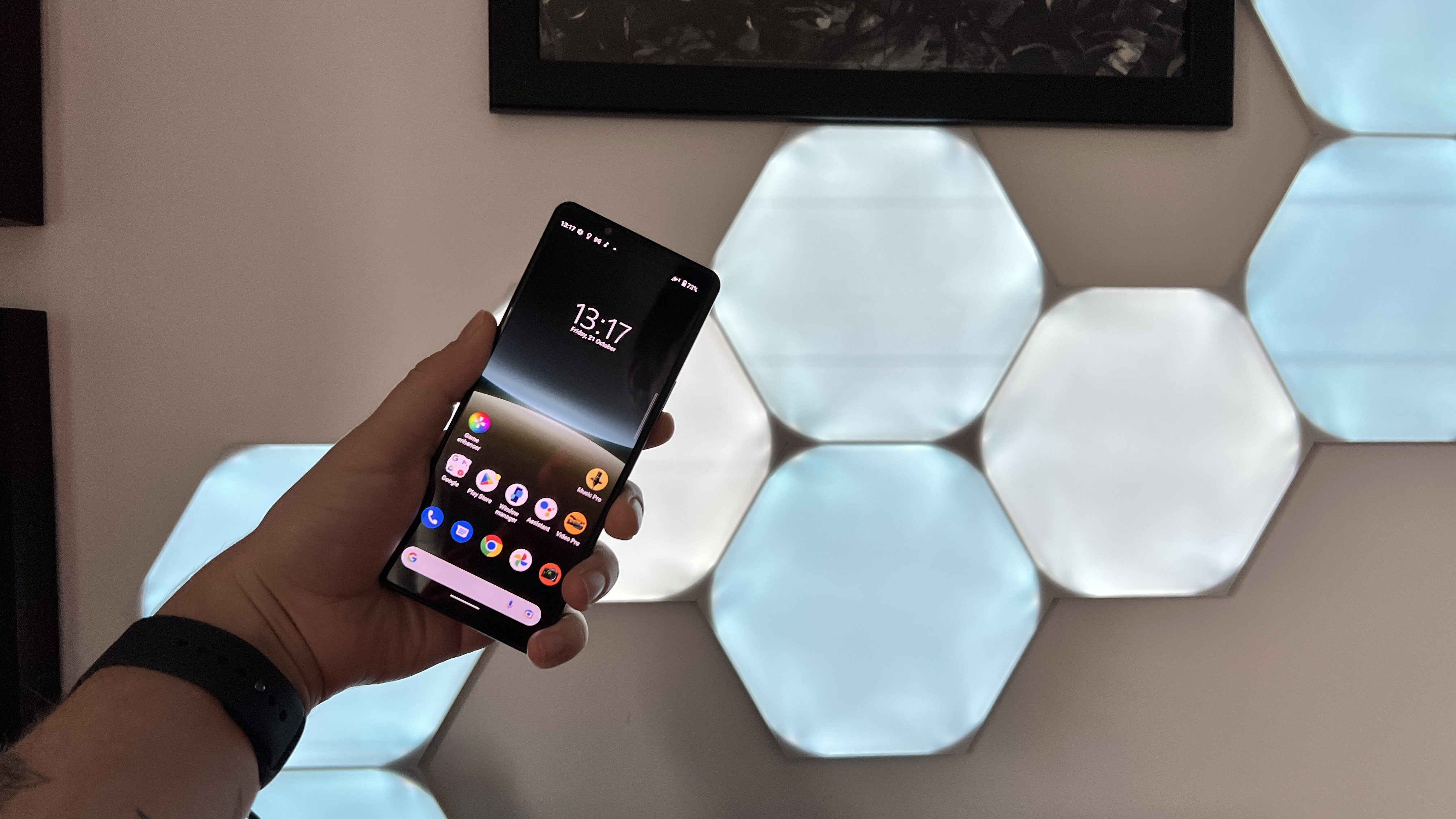Laptop Mag Verdict
The Sony Xperia 5 IV is the ideal middle ground and the best Sony phone of the range — packing great cameras, strong performance, great battery stamina, and a beautiful display in a unique, compact design.
Pros
- +
Powerful Snapdragon 8 Gen 1 chip
- +
Impressive battery life
- +
Gorgeous 21:9 display
- +
Top-of-the-line cameras...
Cons
- -
...pro camera apps are not very easy to use
- -
Gets very hot, very fast
Why you can trust Laptop Mag
The Sony Xperia 5 IV proves that incremental updates, which often draw the ire of tech pundits who prefer flashier, more significant improvements, are not always a bad thing.
Similar to the previous Xperia 5 III, this latest model is tall, yet compact, thanks to the 21:9 CinemaWide display, and comes with a similar triple-camera system from the engineers behind Sony’s Alpha a9 full-frame mirrorless cameras.
In fact, much like what has happened to previous Xperia phones, you’re getting an upgrade to a Qualcomm Snapdragon 8 Gen 1 chip, a larger battery, an ever-so-slightly tweaked camera system, and a marginally smaller frame.
And it’s with these enhancements, dear reader, that when compared to the super expensive flagship Xperia 1 IV and the compromised budget Xperia 10 IV, the Xperia 5 IV is just right. Let me explain why.
Sony Xperia 5 IV: Price and configurations
The Xperia 5 IV is up for sale for $999/£949. This is some pretty steep flagship-level pricing that puts it above the OnePlus 10T and the Pixel 7 Pro, and closer to the realm of the iPhone 14 Pro.
In the U.K., this is available with a free pair of the fantastic Sony LinkBuds S earbuds at no extra cost. But there’s no doubt about it — this is a pricey phone.
Sony Xperia 5 III: Design
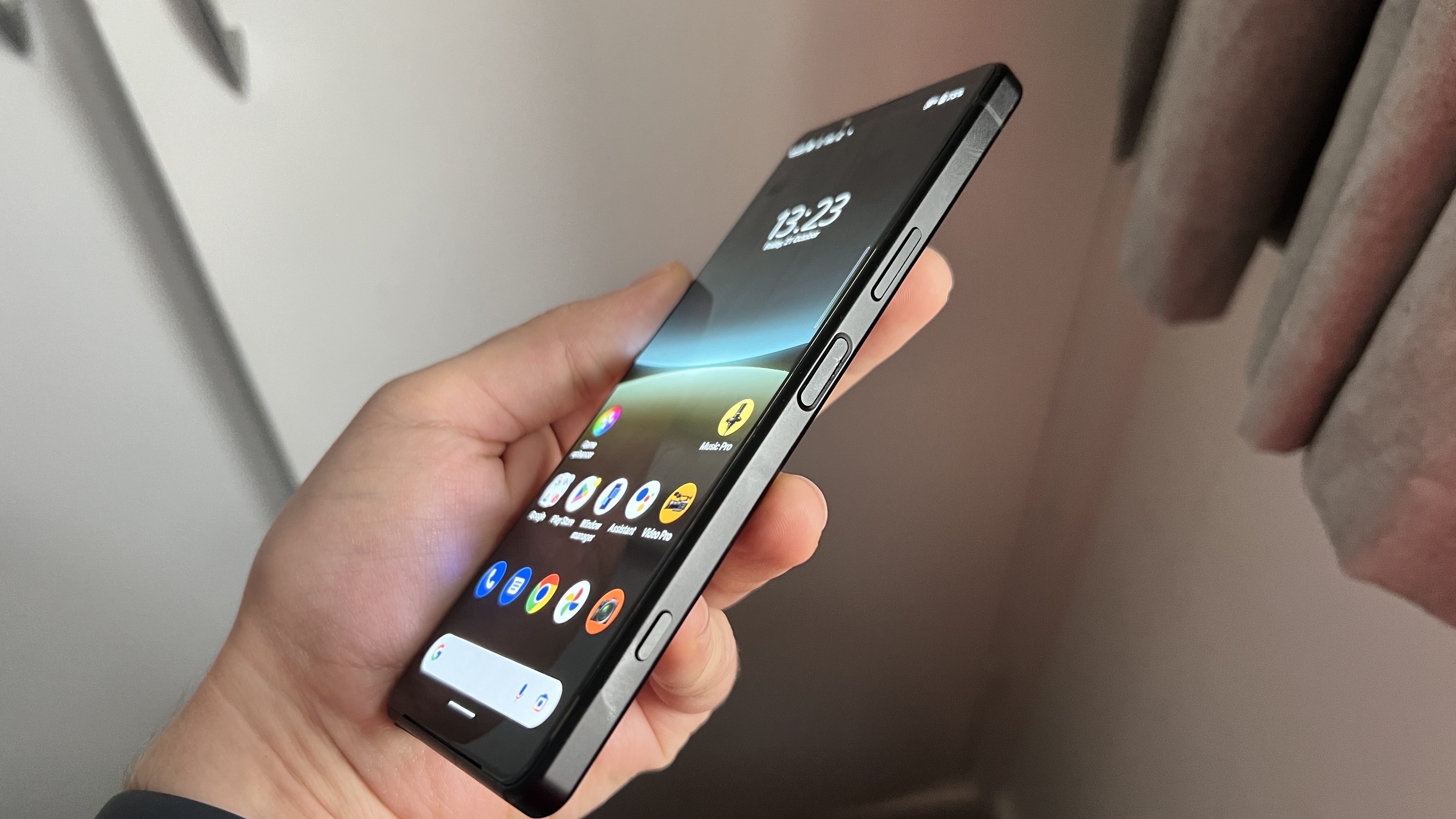
If you’ve held one Sony Xperia phone over the past few years, you’ve held them all. The use of premium materials and a restrained all-black aesthetic has been a proven winner and the fourth generation continues in lockstep.
This classic, glass-and-metal sandwich comes with a dual SIM tray on the left that you can remove without a pin, and various buttons on the right edge including a dedicated camera shutter button. As for ports, you have two:USB-C and a warmly welcomed 3.5mm headphone jack.
Compared to the Xperia 5 III (6.18 x 2.67 x 0.32 inches, 5.92 ounces), the Xperia 5 IV is negligibly smaller (6.14 x 2.63 x 0.32 inches), but a touch heavier at 6.06 ounces. The Sony handset is smaller and lighter than both the OnePlus 10T (6.4 x 2.9 x 0.34 inches, 7.1 ounces) and the Google Pixel 7 Pro (6.4 x 3.0 x 0.35 inches, 7.5 ounces). The iPhone 14 Pro, on the other hand, is smaller than the Xperia 5 IV, but heavier (5.8 x 2.8 x 0.31 inches, 7.3 ounces).
All of this translates into a compact phone that seems weirdly tall at first glance and feel, but is comfortable to hold thanks to its lightweight, skinny footprint. In a sea of standard slabs, this Sony stands out.
Sony Xperia 5 IV: Display
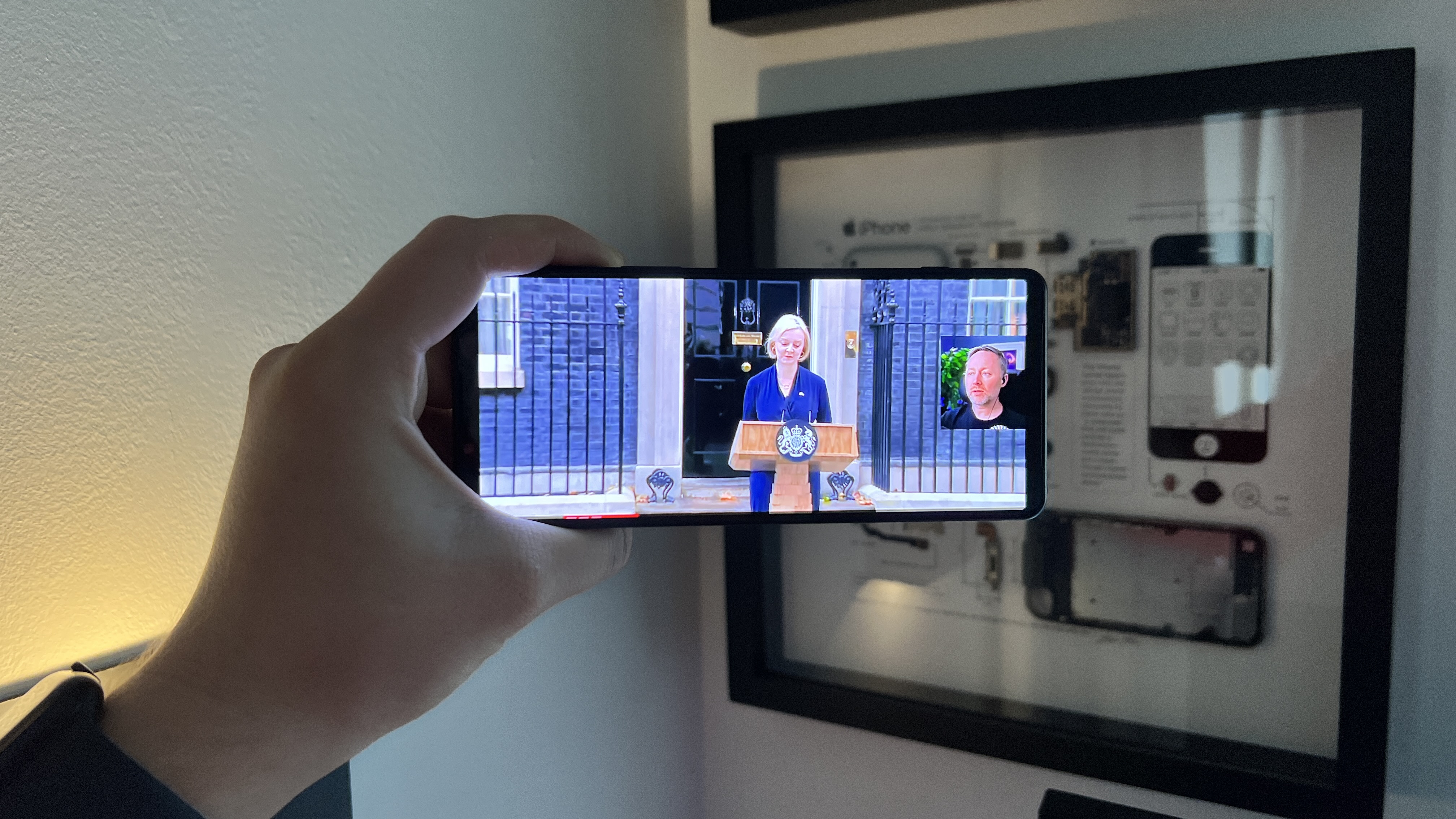
Continuing in lockstep with the Sony Xperia lineage, the 5 IV’s 6.1-inch OLED display sports a 21:9 aspect ratio, 1080 x 2520-pixel resolution, and a 120Hz refresh rate. This time round, it is a little more attractive, primarily because the screen-to-body ratio increased, thanks to the reduced size of the bezels making it seem bigger.
Of course, this is not the 4K resolution you’ll find in the Xperia 1 IV — and it’s not QHD, either. But let’s be honest; FHD+ is more than enough in a phone of this size, and the claimed 100% DCI-P3 color gamut results in a gorgeously vivid and accurate display with a 50% increase in brightness from its predecessor and a deep contrast ratio.
Everything you look at is a flash flood of color with buttery-smooth motion that is great for ultra-wide gaming and watching a range of videos. Spider-Man’s suit in No Way Home pops off the screen as he swings through a gorgeous New York City.
Living up to its “CinemaWide” branding, this is one of the best smartphones for viewing content — beaten only by its bigger 4K sibling.
Sony Xperia 5 IV: Audio
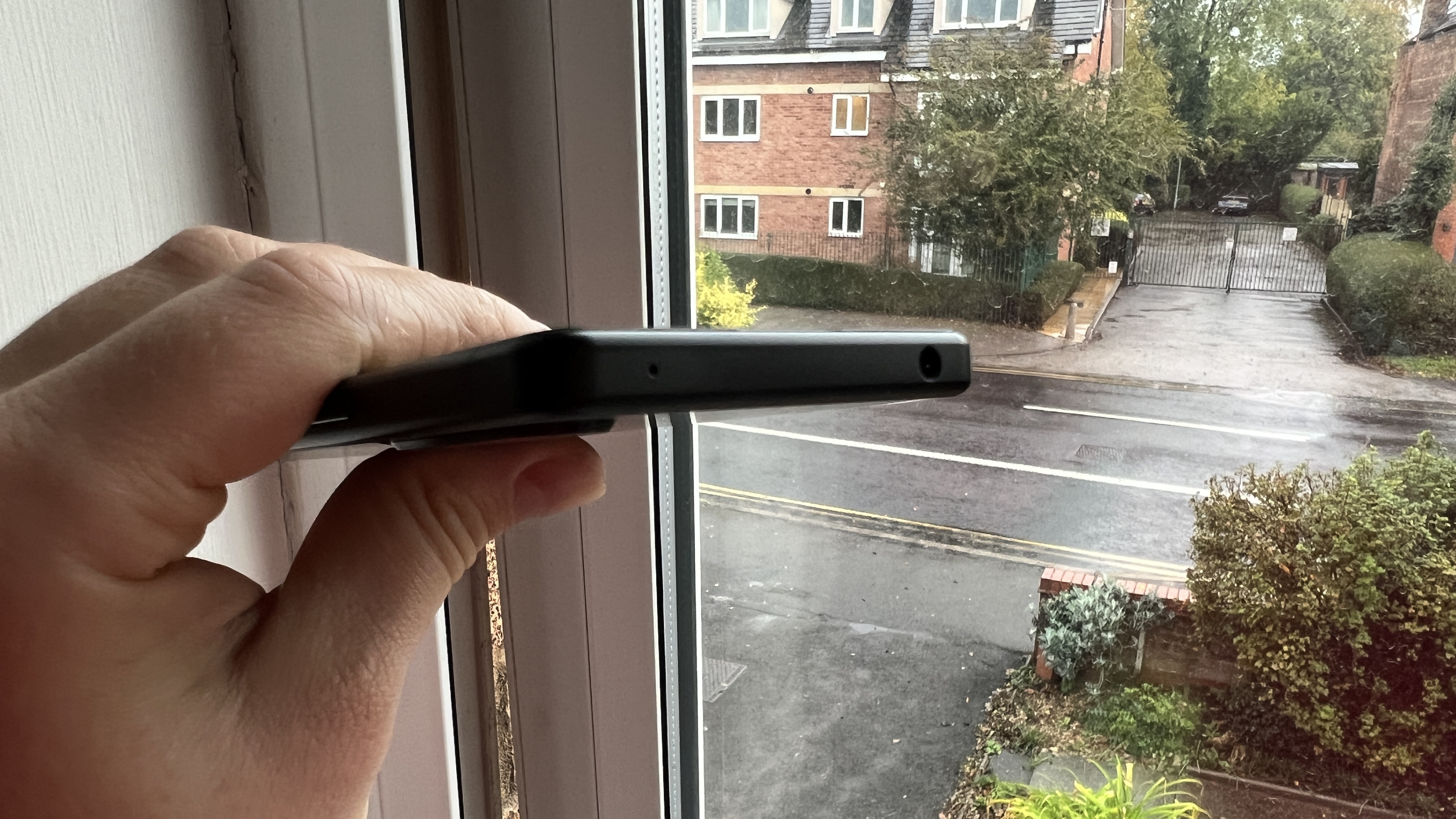
Of course, a good viewing experience needs powerful audio, which this phone delivers handily, thanks to the continuation of three key features.
First, hi-res wireless audio, thanks to the LDAC codec on-board and 360-degree spatial audio. This means you can make the most of Sony’s own WF-1000XM4 earbuds, or the likes of Edifier’s Neobuds Pro. If you haven’t heard the difference between standard AAC audio and LDAC for yourself, it is night and day.
Second, the 3.5mm audio jack, which itself gets hi-res audio support. My classic Sennheiser cans are incredibly thankful for this.
And finally, the dual stereo speakers with Dolby Atmos support. Of course, like any smartphone speakers, it is tinny when compared to a proper pair of headphones, but the sound is crisp and doesn’t distort at all at high volumes. The subtle details shone; the thrashing loud chorus was all kept under control while playing Four Year Strong’s cover of “Bittersweet Symphony.”
The pure gimmickry of Sony’s Dynamic Vibration returns as well, which matches haptic vibrations to the audio being played — be it a firm thud of the bass or a low rumbling in tension building moments in films.
For most of you, it’s best to just turn this off, as it can be quite a drain on the battery.But there are moments where the subtle vibrations do deliver a tactile sensation, which activates another sensory response as you watch content.
Sony Xperia 5 IV: Performance
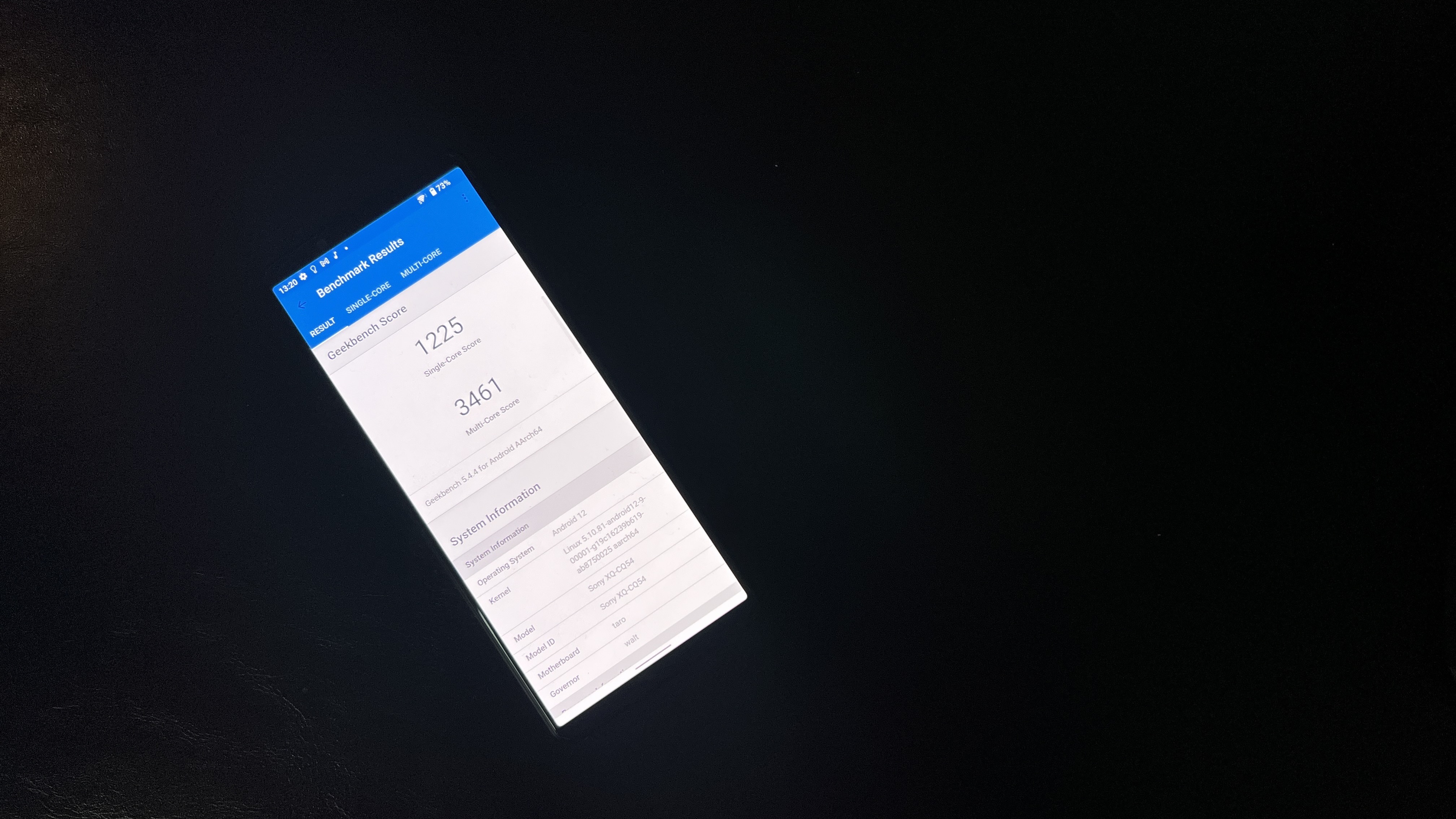
Under the hood, you’ll find a Snapdragon 8 Gen 1 chipset alongside 8GB RAM and 128GB of on-board storage, which is expandable thanks to the microSD card slot. In our own Geekbench 5 testing, the Xperia 5 IV hit a multi-core score of 3,461. Comparatively, the A16 Bionic-packed iPhone 14 Pro trumps it with a 5,469 multi-core score, and with a souped up version, it is just pipped by the Spandragon Gen 1+ in the OnePlus 10 T (3,476 multi-core).
On the graphical side, it maxed out the Wild Life Unlimited 3D Mark test, so lets take it up to the 4K rendering Extreme version. In this test, the Xperia 5 IV hit an average frame rate of 15.10 fps, which falls just behind the 16.7 fps of the OnePlus 10T, but is trounced by the iPhone 14 Pro (19.7 fps).
In real-world use, this all translates into a super fluid Android user experience that didn’t see a hint of slowdown, no matter what I threw at it — from all of your day-to-day tasks and even prosumer use cases, such as recording 4K HDR video at 120 fps. Even with just 8GB of RAM compared to the OnePlus 10T’s mammoth 16GB, multitasking is swift.
The issue of thermal management does rear its head here, just like it did in the Xperia III. Not to say it causes any significant slowdown under sustained use, but it does get real hot real fast. In fact, opening either the Photo or Cinema Pro apps give you a warning about the device temperature potentially resulting “in burns.”
Sony Xperia 5 IV: Battery Life & Charging
The Sony Xperia 5 III packs a 5,500mAh battery, 30W charging and a new helpful addition of wireless charging. Battery life is always a moving target because it depends on your daily usage — and even more so with the Xperia 5 IV since it features prosumer-level apps and tools.
However, the vast majority of the time, this bigger cell is more than up to the task of keeping it powered throughout it all. I made it through a standard day (a few hours of web browsing, calls, messaging, listening to podcasts and Spotify all day, social media use, and wrapping up with some gaming in the evening) with about 25-30% remaining.
Meanwhile, given the power and capabilities of the pro camera apps, they can kill the battery quickly, but not as fast as to make you worry about using them.
Sony Xperia 5 IV: Cameras
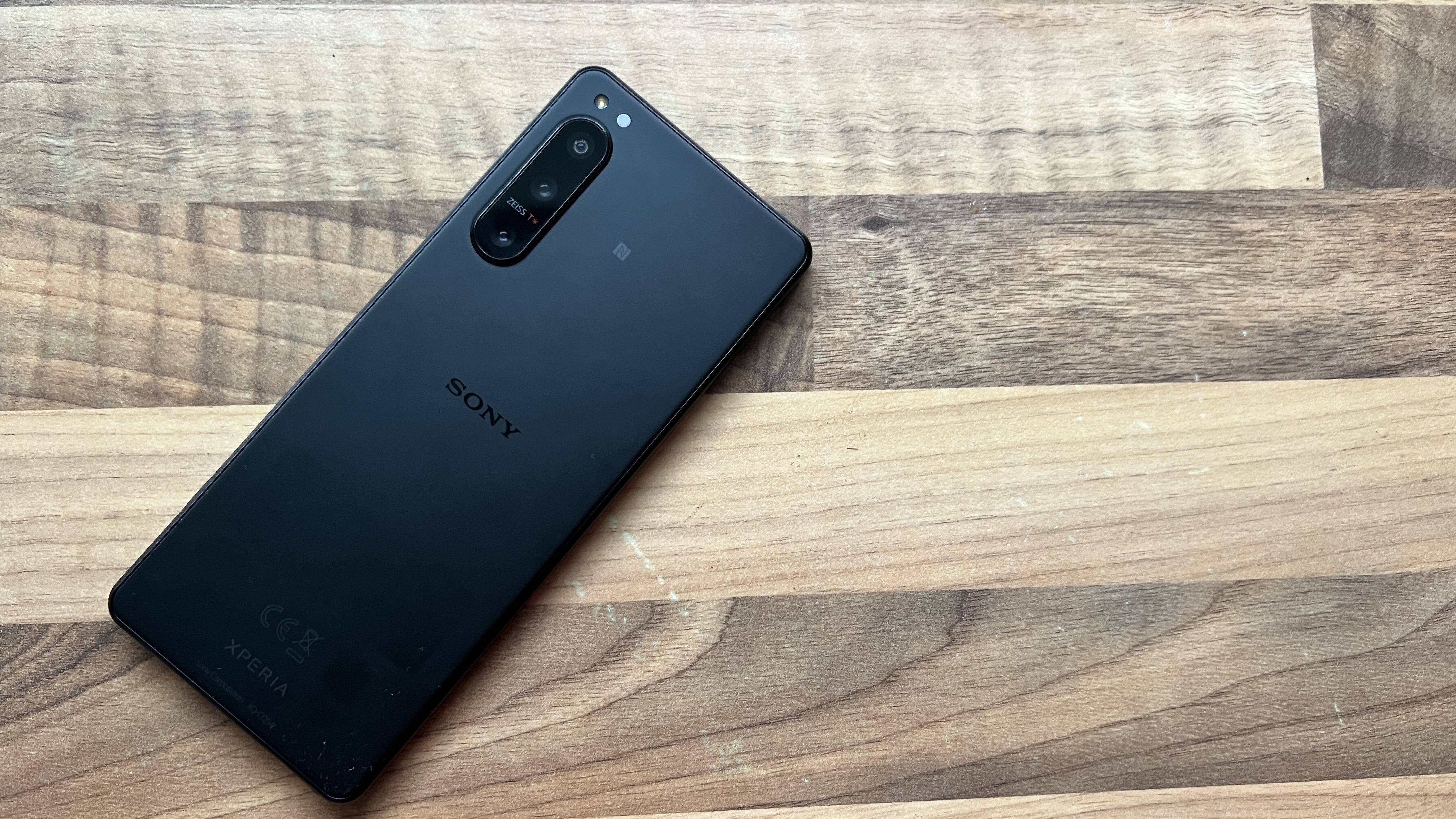
The Sony Xperia 5 IV packs a near-identical 12MP triple camera system to its previous iteration and the Xperia 1 IV, which means it’s a fantastic snapper.
In more detail, your main shooter is a 12MP sensor with a 24mm lens and an f/1.7 aperture, which works alongside a 12MP, 16mm ultra-wide snapper with an f/2.2 aperture. Adding to the impressively versatile shooting setup, there’s also a 12MP, f/2.4, 60mm telephoto lens.
Inheriting Sony's pro camera DNA, these cameras can be controlled by one of two apps: Photo Pro and Cinema Pro. If you’ve ever used an Alpha camera, you’ll feel right at home. You have an auto mode that produces decent shots with true-to-life colors, which may seem flat to any who’s taken a photo on a Samsung phone, but I like the more realistic tones on the leaves here.
The ultra-wide lens produces great, expressive shots with zero artifacting or any kind of fuzziness around the edges. The telephoto gives you a nice 2.5x zoom option, but unfortunately, falls victim to some noise around the edges due to the narrower aperture. Plus, there isn’t the same optical zoom capabilities you’d find in the Xperia 1 IV, which limits its capabilities.
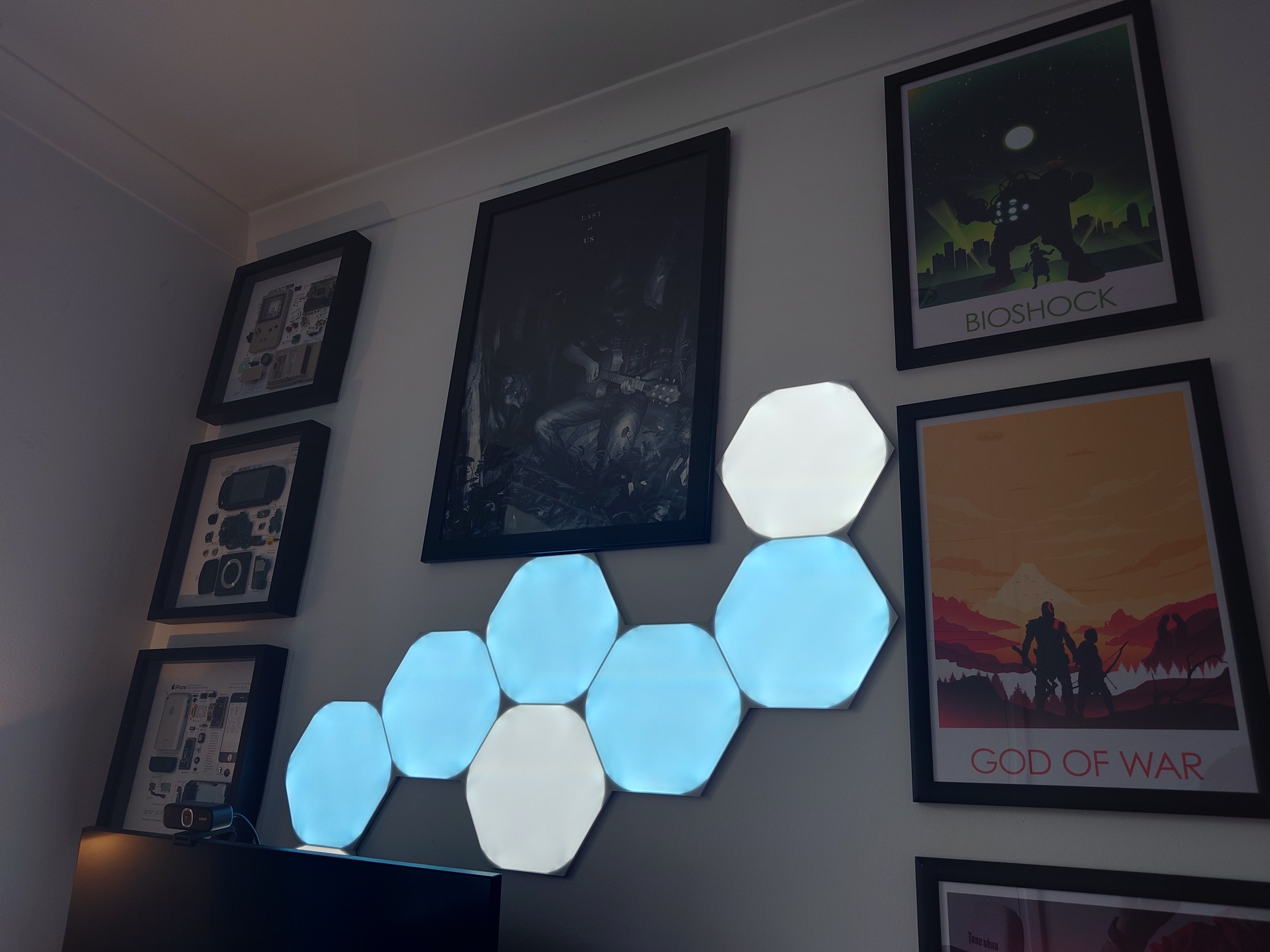
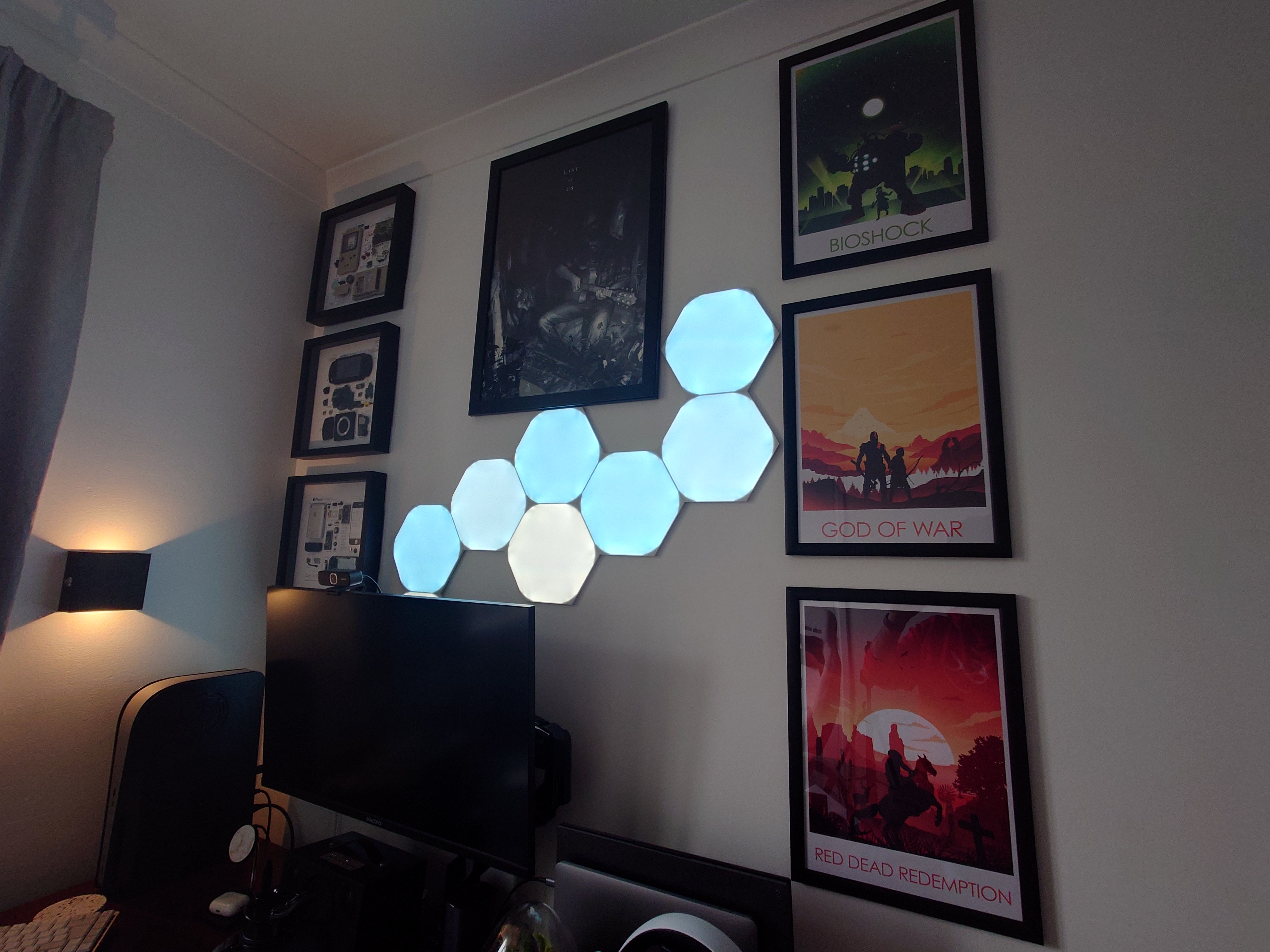




However, the real party trick is the astonishing level of customization. Manual settings, such as altering the shutter speed and white balance, means you can let your creative mind run wild — provided you know what you’re doing, as these options can get quite convoluted.
The formula does fall down slightly in low light because there isn’t a dedicated night mode feature. Sure, you can customize your way around it with a longer shutter speed and other workaround techniques, but in auto mode, shots are pretty fuzzy.
Also, Sony upgraded the selfie camera to 12MP, delivering nice, detailed shots with the help of eye detection for sharp focus and hand-gesture recognition to take pictures by waving, which reduces the camera shake of pushing the button.

When applied to video, the 4K capture via the rear cameras continues to be a solid step above what you can expect from many Android phones nowadays, so long as you can make the most of the Cinema Pro app. In auto mode, the video is pretty standard, but with the benefit of all the custom settings, you can get some great cinematic content.
Overall, the cameras are definitely a big strong point for the Xperia 5 IV.. I would love to see some simplicity in an improved auto mode, so I don’t need to tweak the settings every time to get the perfect shot, but for the prosumers who know their white balance from an f stop, this is a great option.
Sony Xperia 5 IV: Software
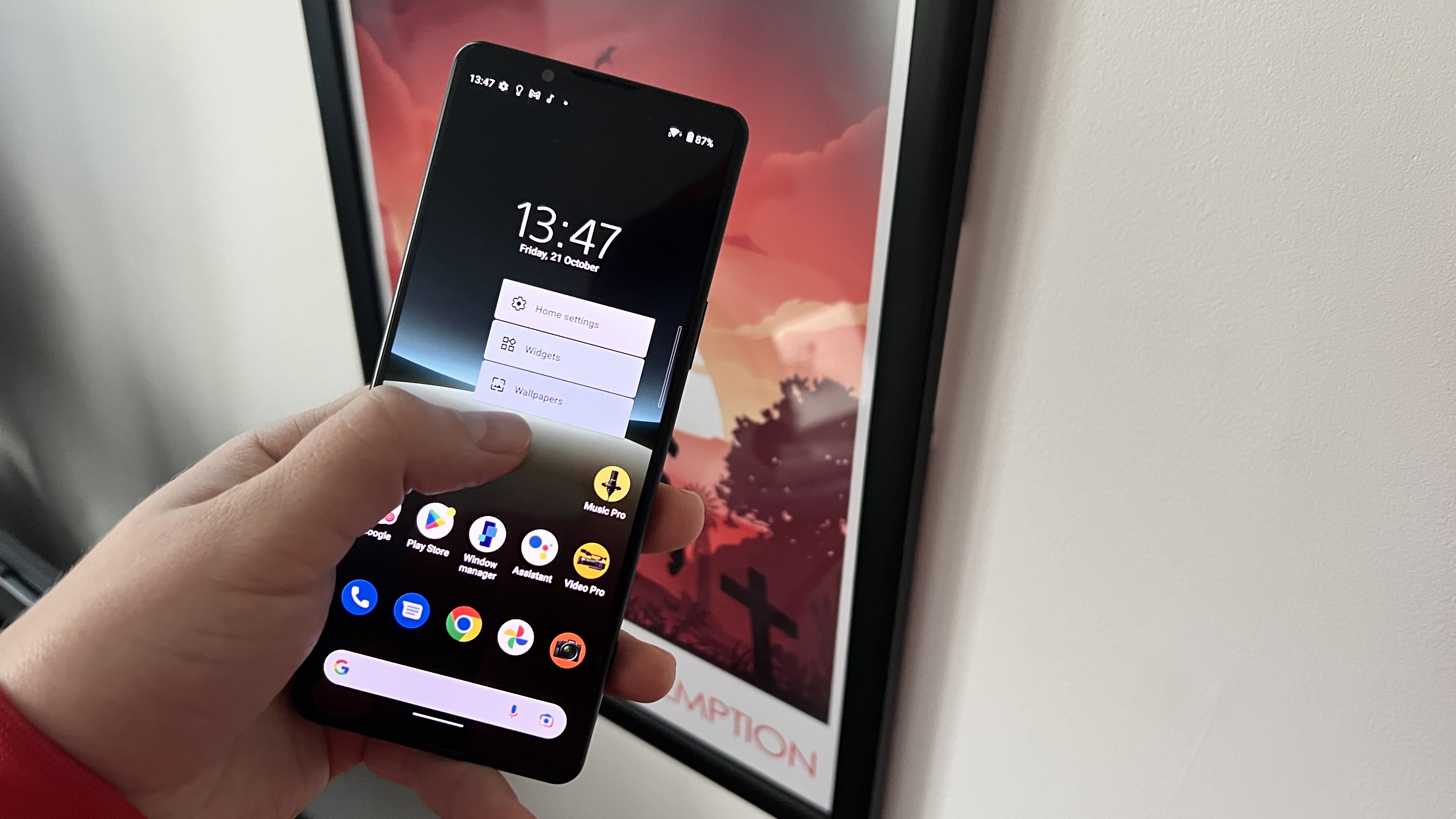
The Sony Xperia 5 IV runs Android 12 with no bloatware except for a link to a free three-month Tidal subscription for lossless audio streaming. The UI overlays added to help you overcome the taller display are useful with easy access to split-screen multitasking and the Side Sense bar for additional control.
Sony does stumble with software update support, though. While there is no official policy on how long the company will support the Xperia 5, history suggests you’ll get two years of updates. This is disappointing, as you’re able to get better software support from cheaper phones.
Bottom line
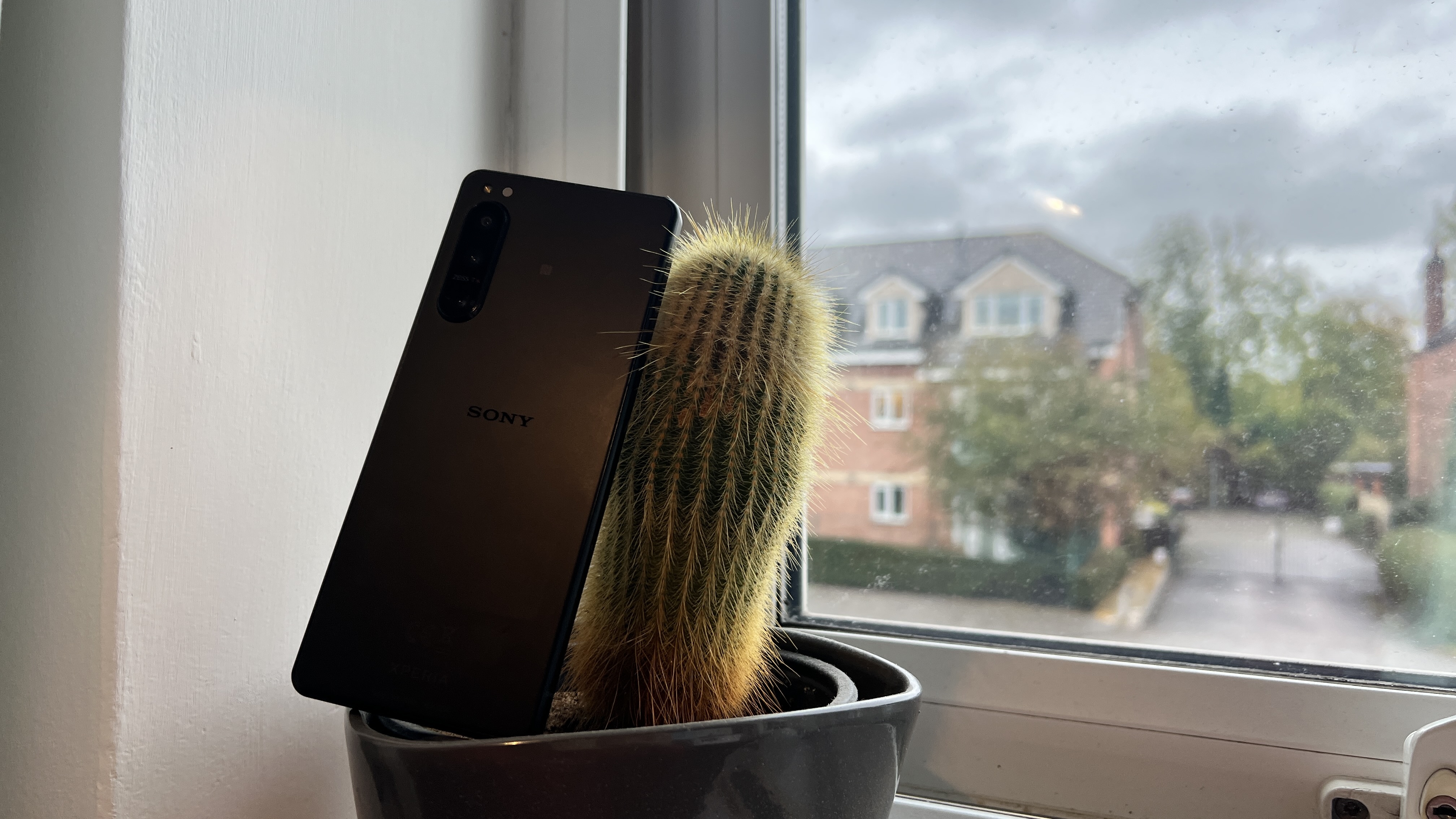
The Sony Xperia 5 IV makes small tweaks to the already strong compact flagship formula to make for an uncompromising phone in pretty much all areas. It is a smaller device with great performance, cameras, and display, paired with impressive battery life and an unmistakably premium, pocketable construction.
Some of the issues do persist from last year’s model, but while some of these are technical issues like the overheating, others are deliberate choices you will have to factor into your decision, such as the prosumer-focused camera software.
Sony identified its niche and it’s going in hard for it. If you need a better balanced all-rounder, I’d recommend looking towards the Google Pixel 7 or OnePlus 10T. But if you are a camera enthusiast who can make the most of the Xperia 5 IV’s capabilities, you’ll love every second of your time with it.

Jason brought a decade of tech and gaming journalism experience to his role as a writer at Laptop Mag, and he is now the Managing Editor of Computing at Tom's Guide. He takes a particular interest in writing articles and creating videos about laptops, headphones and games. He has previously written for Kotaku, Stuff and BBC Science Focus. In his spare time, you'll find Jason looking for good dogs to pet or thinking about eating pizza if he isn't already.
